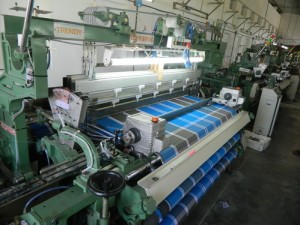The Lungi is a traditional dress mainly worn by men & women in South Asia. It is commonly worn by the people around the waist in Bangladesh, India, Pakistan, Sri Lanka, Nepal, Thailand, and Malaysia as a traditional dress lungi. Normally men wore this dress for its comfort but we can see that tribe women also worn Lungi. The origin of Lungi can be traced back in south India where this dress is worn for thousands of years.
The Traditional Dress Lungi
In Bangladesh, most of the men wear Lungi when they at home. It is very popular where the heat and humidity create an unpleasant climate for other dress like pent, pajama or trouser. This dress is comfortable because it is made of a tube/ skirt. This is a kind of loin cloth, stitched, unlike a dhoti resembles a skirt which upper borders is tucked into the waist after tying single or multiple knots.
Different sizes of Lungi can be found in the market for adult 115 cm in height and 200 cm in length is available, for kids aged below 8 years Lungi also available and for teenager’s average size Lungi can be found. Both cotton and silk lungi is available in the market but people prefer cotton lungi to wear.
Lungi mainly woven from cotton and price depends on the size, color, and quality of the product. Normally you can find a Lungi at tk150 but it is a lower quality product. A good quality Lungi can be bought for Tk 400. The more price the more the quality of cotton and design. If you go through in the market you can get a higher quality beautiful lungi at tk1200 to tk4000. In Bangladesh some famous brands of lungi, these are, ATM Lungi, standard lungi etc
Before industrialization, people knit Lungi by hand and handmade tools, and it basically took more time to make a lungi, but the quality of that product is higher because of the careful knitting by the knitter. When a lungi is designed by different color it basically required more time and energy than as usual. In Bangladesh sirajganj, kustia, Khulna is famous for Lungi production where many factories are producing lungi each year for meeting the demands of the customer. In Dhaka, a quality lungi is produced by the Ruhitpuri knitter.
Now a day’s technology makes it easier to produce because of customized machinery. For producing lungi Knitter needs more than 2 days but now with the automated machine, it is possible to produce thousands of lungi within one day. Technology made it possible but if we want to have a quality lungi with the customized design then we have to use the old way of producing lungi by the knitter who knit lungi with passions. Knitters are the artist who innovates new design which is very lucrative.
The way people worn lungi is depended on the occasion and the region. For the occasion, people prefer white or cream color lungi, but for fashion, people prefer multi-color/ colorful lungi. Some people worn lungi short and some people ware it from waist to bottom. Labor/ worker basically worn it lower, in some cases they bend it so that they can work comfortably.
Lungi can be found in different colors like- single color, multi-color, butik print, and stripe. Normally old people like to wear white color Lungi on the other hand child or middle age people wear strip Lungi or single color Lungi.
Depending on the occasion a Lungi can be worn differently. It looks nice when many people wore the same dress and standing together. Now modes also using lungi to their ramp show because of its unique design and style. Last year an Indian movie song showing the lungi dance where models wore lungi and dance, they look very nice with this traditional dress lungi.
Tribe people, both male, and female also wear lungi on the normal and occasional cases.
So I think that because of its designs, popularity, and comfort Lungi is one of the most attractive traditional dresses found in the south Asian region. For this reason, we have to keep this tradition with us and let the world to know about our traditional dress Lungi.
Written by
Md. Nahian Mahmud Shaikat
Facebook: Nahian Mahmud Shaikat
Email: [email protected]
Phone: +8801914262602








Nice Article… keep it up…
Thank you for your compliment
Thank u for every think for nice article
Thanks for your feedback
Nice article, thanks Nahian.
Thanks for the information. I like wearing check lungies
Is lungi’s and dhoti’s are same? What is the difference?